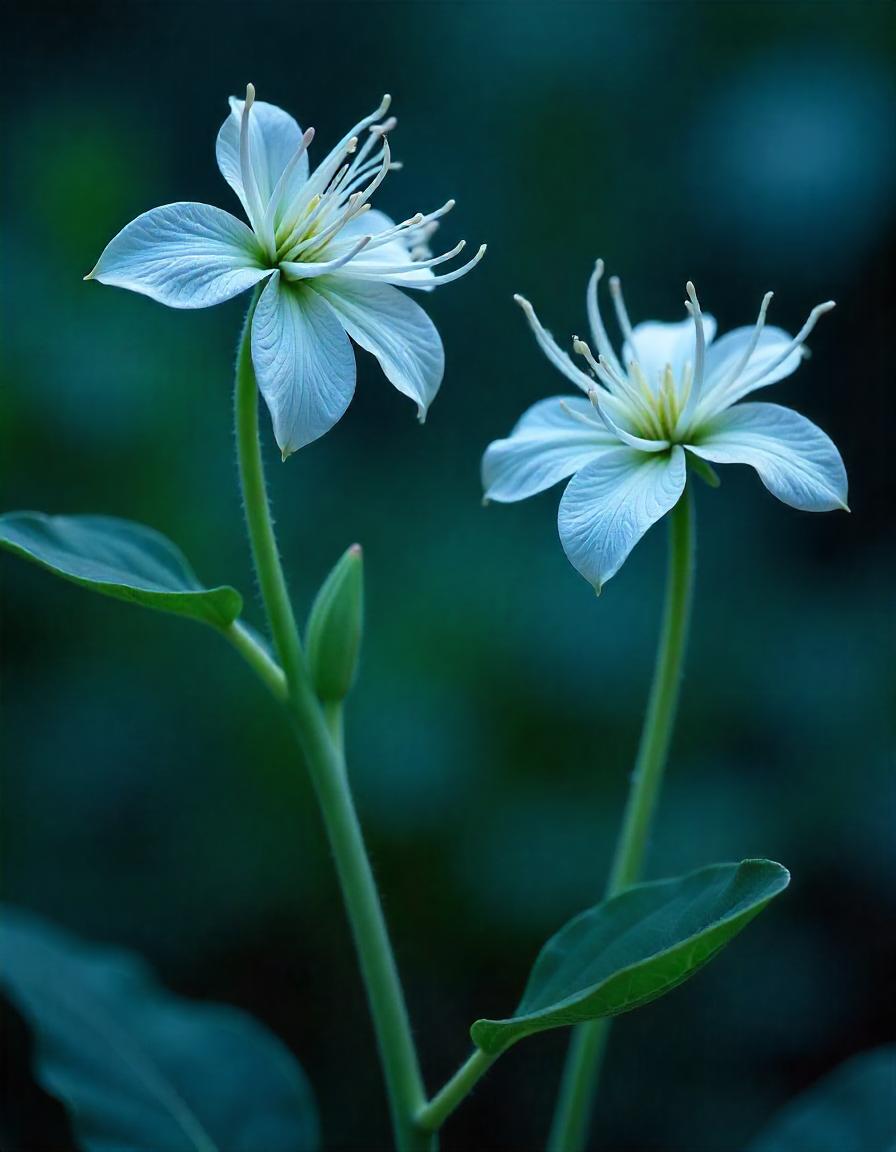Have you ever wondered how plants manage to reproduce over and over again? Sure, bees, wind and other plants help. But what happens when there are no pollinators around? That's when the true masters of adaptation come into play: twining plants.
These plants carry both male and female reproductive organs in a single flower or on a single plant. This means that they can self-pollinate, be cross-pollinated or even both. In evolutionary terms, they are the absolute jackpot!
But what exactly does that mean? Which plants belong to it? And can it also have disadvantages? Let's delve into this exciting world together - you'll be surprised how many hermaphrodite plants you already know! 🌿✨
Ten surprising hermaphrodite plants
Now it's getting exciting: many of the plants you eat every day or have in your garden are actually hermaphrodites. Here is a list of real survivors:
1️⃣ Tomatoes - A classic in every kitchen, and yes: they pollinate themselves!
2️⃣ Lilies - The elegant garden plant with double the power.
3️⃣ Roses - Not only do they look beautiful, they are also biologically clever.
4️⃣ Maple trees - Who would have thought that these trees could be hermaphrodite?
5️⃣ Pumpkins - Some varieties are hermaphrodite, some are not.
6️⃣ Sunflowers - You can do better without bees, but you can do it alone if necessary.
7️⃣ Wheat - One of the reasons why we have so much bread!
8️⃣ Cherries - Their flowers are hermaphrodite, but they prefer to be cross-pollinated.
9️⃣ Banana plants - Here, too, there are varieties that can do both.
🔟 Oaks - Yes, even some trees are hermaphrodites!
💡 Fascinating, isn't it? Nature really does have a solution for everything!

What are hermaphrodite plants? An ingenious strategy of nature
Imagine you are a plant. Your mission? To reproduce! But what if there are no pollinators around? Or if you're growing on a desert island with no other plants of your species nearby?
This is where twining plants show themselves to be real survivors. They simply have both: stamens (male) and ovary (female). This allows them to pollinate themselves - if necessary. In many cases, however, there are other ways, for example with the help of wind or insects.
💡 But beware: not all hermaphrodites are the same!
There are two main types:
1. self-pollinators - independent and efficient 🌿
These plants don't need anyone but themselves. Their pollen reaches their own ovary all by itself - and hey presto, the next generation is assured.
👉 Examples:
Tomatoes 🍅 - No wonder they grow so well in the greenhouse!
Beans 🫘 - They don't need bees, they do it themselves.
Wheat 🌾 - Perfect for agriculture because it is independent.
2. Cross-pollinators - team players with plan B 🐝
Although they have male and female organs, they still need help to reproduce. However, if there are no pollinators around, they can pollinate themselves if necessary.
👉 Examples:
Apple trees 🍏 - They love to be visited by bees.
Cherries 🍒 - They also rely on outside help if possible.
Sunflowers 🌻 - Their pollen is particularly valuable for bees.

Are the seeds of hermaphrodite plants fertile? 🌱
Now it's getting technical, but don't worry, I'll keep it understandable! Many people ask themselves: Can I grow new plants from the seeds of hermaphrodite plants? The answer: Yes and no - it depends!
Self-pollinating hermaphrodite plants usually have healthy, germinable seeds.
Foreign-pollinated hermaphrodite plants can have problems due to self-pollination - inbreeding can weaken the offspring.
Hybrid hermaphrodite plants (e.g. special tomato or pumpkin plants). special tomato or pumpkin varieties) do produce seeds, but these are often no longer able to germinate.
💡 My tip: Before you collect seeds, check whether your plant is a hybrid. Otherwise you might be in for a big surprise!
Cuttings View all
How do you recognise hermaphrodite plants? How to find them in your garden! 👀
If you're curious now: How do you actually recognise a hermaphrodite plant? Here are a few simple tricks:
✔ Look closely at the flowers! Hermaphrodite plants have both stamens (male) and an ovary (female).
✔ Watch out for pollination! If a plant bears fruit even without wind or insects, it is probably hermaphroditic.
✔ Use a plant app! Apps such as "PlantNet" or "Flora Incognita" help you to identify plants.
Hermaphrodite plants in cannabis - a problem for growers? 🌿
A special case are cannabis hermaphrodite plants. This can be a problem for growers, as hermaphrodite cannabis plants pollinate themselves and then produce seeds instead of pure flowers. This is not always desirable.
🚨 Why does this happen?
Too much stress! Temperature, light or a lack of nutrients can trigger hermaphrodite formation.
Genetic predisposition - Some strains are simply more susceptible.
Survival strategy - If there are no pollinators, the plant prefers to pollinate itself.
💡 Solution:
Detect and remove early, otherwise you risk seeds in the entire crop.
Create ideal conditions so that the plant does not "panic"
.Hermaphrodite plants are real survivors! 🌏🌸
Whether in the forest, in the field or in your garden - hermaphrodite plants are everywhere and show how ingeniously nature adapts.
✅ They ensure their reproduction even when there are no pollinators around.
✅ They are among many of our most important crops.
✅ Their seeds are often fertile - but not always!
You can take a closer look the next time you go for a walk. Maybe you'll spot one of these clever plants in your neighbourhood. 🌿💡




















